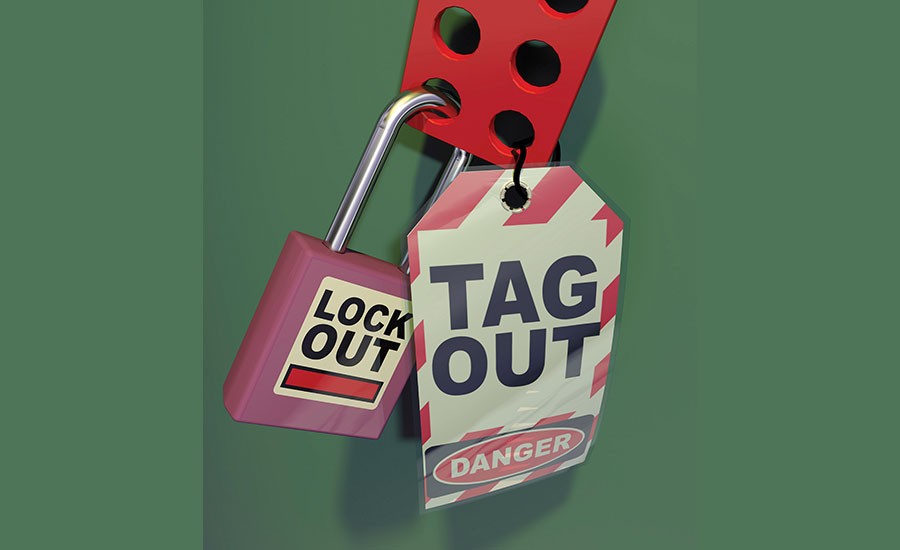Ignoring “lockout/tagout” Can Lead to Death
 November 2 of this year we had a news item entitled “Ignoring Heat Treatment Safety Has Lethal Consequences” https://themonty.com/ignoring-heat-treatment-safety-has-lethal-consequences/ The purpose of the article was to point out that the heat treatment industry can be dangerous if safety procedures are not followed, that particular story pointed out that not following Lock Out Tag Out (LOTO) and Confined Space Entry Policies directly lead to two deaths. What is “Lockout/tagout”? The U.S. Department of Labor’s Occupational Safety and Health Administration (OSHA) defines it in this summary;
November 2 of this year we had a news item entitled “Ignoring Heat Treatment Safety Has Lethal Consequences” https://themonty.com/ignoring-heat-treatment-safety-has-lethal-consequences/ The purpose of the article was to point out that the heat treatment industry can be dangerous if safety procedures are not followed, that particular story pointed out that not following Lock Out Tag Out (LOTO) and Confined Space Entry Policies directly lead to two deaths. What is “Lockout/tagout”? The U.S. Department of Labor’s Occupational Safety and Health Administration (OSHA) defines it in this summary;
“Lockout/tagout” refers to specific practices and procedures to safeguard employees from the unexpected energization or startup of machinery and equipment, or the release of hazardous energy during service or maintenance activities.1 This requires, in part, that a designated individual turns off and disconnects the machinery or equipment from its energy source(s) before performing service or maintenance and that the authorized employee(s) either lock or tag the energy-isolating device(s) to prevent the release of hazardous energy and take steps to verify that the energy has been isolated effectively. If the potential exists for the release of hazardous stored energy or for the reaccumulation of stored energy to a hazardous level, the employer must ensure that the employee(s) take steps to prevent injury that may result from the release of the stored energy.
Lockout devices hold energy-isolation devices in a safe or “off” position. They provide protection by preventing machines or equipment from becoming energized because they are positive restraints that no one can remove without a key or other unlocking mechanism, or through extraordinary means, such as bolt cutters. Tagout devices, by contrast, are prominent warning devices that an authorized employee fastens to energy-isolating devices to warn employees not to reenergize the machine while he or she services or maintains it. Tagout devices are easier to remove and, by themselves, provide employees with less protection than do lockout devices.”
Unfortunately the example we used in our previous article is not the only one which we have run across over the years. In 2018 there was an incident at a commercial heat treater in the US Midwest which lead to the death of an employee, the details are below. In that particular case “lockout/tagout did not cause the death, however the company was cited for not following this procedure. Please, please keep in mind that safety rules and regulations should always be followed.
“OSHA Fines XXX Heat Treating $181K After an Employee Was Electrocuted. By OSHA Jul 02, 2019.
The U.S. Department of Labor’s Occupational Safety and Health Administration (OSHA) has cited XXX Heat Treating– for 21 serious health and safety violations. The company faces penalties of $181,662. OSHA inspected the company in December 2018 after an employee was electrocuted while using a damaged portable lamp when cleaning the inside of a metal tank. A second employee suffered electrical shock injuries in an attempt to assist the injured co-worker. Inspectors determined that the lamp’s cord had exposed bare conductors, and the lamp was unsuitable for use in wet locations. They also found a damaged extension cord used to connect the lamp to power. OSHA cited the employer for failing to use electrical safety work practices, provide appropriate personal protective equipment, train employees about electrical hazards, and repair damaged electrical outlets. OSHA also cited the company for exposing employees to falls, and failing to implement lockout/tagout procedures and a permit-required confined space program.”
Did you like this article? Click here to subscribe to The Monty.

